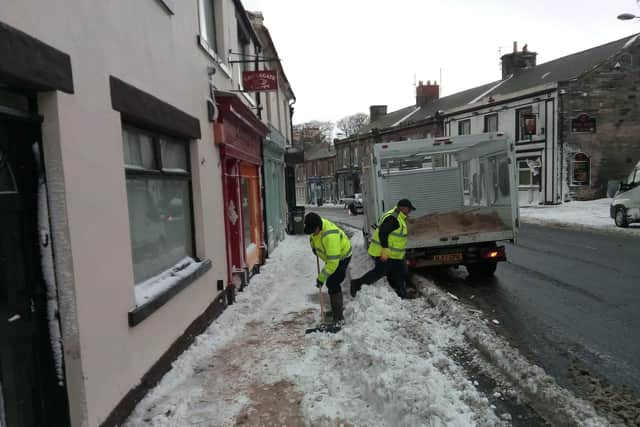The dos and don'ts of clearing snow and ice from the pavement as South Tyneside hit with latest weather warning in the run up to Christmas
and live on Freeview channel 276
Community-minded people may be put off picking up a spade and clearing away snow and ice from public paths outside their homes, for fear of legal action if someone should later slip and be injured there.
However, Government guidelines on clearing snow from a road, path or cycleway says: “You can clear snow and ice from pavements yourself.
Advertisement
Hide AdAdvertisement
Hide Ad"It’s unlikely that you’ll be sued or held responsible if someone is injured on a path or pavement if you’ve cleared it carefully.”


The dos and don’ts for clearing snow
Further Government advice when clearing snow and ice is:
*Do it as soon as you can. It’s easier to move fresh, loose snow
*Don’t use water. It might refreeze and turn to black ice
*Use salt if possible. It will melt the ice or snow and stop it from refreezing overnight (but don’t use the salt from salting bins as this is used to keep roads clear)
*You can use ash and sand if you don’t have enough salt; it will provide grip underfoot.
Advertisement
Hide AdAdvertisement
Hide Ad*Pay extra attention when clearing steps and steep pathways. Using more salt may help
In South Tyneside
On its website, South Tyneside Council has outlined its priorities for gritting roads.
Highest priority goes to major roads such as the A194, bus routes, steep banks and priority pavements in shopping areas, around schools and on steps and footbridges.
Major trunk roads such as the A19 are the responsibility of National Highways. For information on its winter gritting programme call 0300 123 5000, or visit www.nationalhighways.co.uk.
Advertisement
Hide AdAdvertisement
Hide AdThe council has six gritting lorries and more than 200 grit bins, used to clear footpaths, shopping areas and other areas that may be hazardous in the event of snow and ice.
The bins are to help council staff in their gritting operations – not for private use.
Pre-gritting takes place on priority routes as and when the temperature drops.
Gritting South Tyneside's 311km of priority routes takes around 2.5 hours.
Advertisement
Hide AdAdvertisement
Hide AdMotorists are advised to take greater care than normal in winter driving conditions and to check weather forecasts and information websites.
What the council says
Cllr Ernest Gibson, cabinet member for Transport and Neighbourhoods, said: "We have a winter maintenance plan in place to deal with this type of weather, with salt stockpiled and the council ready to react whenever conditions suddenly take a turn for the worse.
"Our teams work around the clock wherever necessary with a focus on keeping priority routes clear.
“sundThey are working in difficult conditions clearing snow and ice to ensure busy roads and footpaths are safe for the public and so that vulnerable people can get out and about safely.
Advertisement
Hide AdAdvertisement
Hide Ad"We always pre-salt our priority routes ahead of ice and snow coming, with pre-salt runs triggered by advance weather forecasts from our forecast provider DTN.
"Though it is important to note that the effect of rock salt depends to a great extent on moving traffic to make it work effectively, it is not an immediate fix.”
